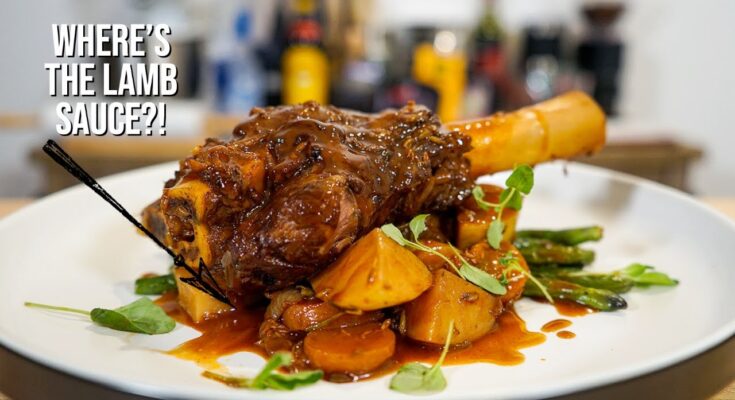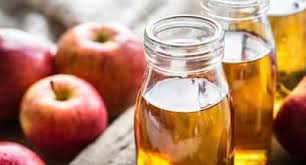Lamb Shank Recipe: When it comes to comfort food, few dishes can match the rich, tender goodness of lamb shank. If you’ve ever dined at a fancy restaurant and savored a melt-in-your-mouth piece of lamb that practically slid off the bone, chances are it was a slow-cooked lamb shank. But you don’t need a five-star chef to enjoy this culinary delight at home.
With the right ingredients, a little patience, and this step-by-step guide, you’ll have a restaurant-quality lamb shank ready to impress your family and friends.
What is Lamb Shank?
The lamb shank is a cut from the lower part of the animal’s leg. It’s a tough cut filled with connective tissue, which makes it perfect for slow cooking. When given the right amount of time and love, the collagen in the meat breaks down, resulting in succulent, flavorful meat that falls right off the bone.
Why is Lamb Shank so Popular?
Its popularity lies in its transformation. What starts as a tough, sinewy cut becomes one of the most luxurious textures imaginable after hours of gentle cooking. Plus, the marrow inside the bone adds an unbeatable richness to the sauce, making every bite a full-bodied experience.
Ingredients You’ll Need
Before you start cooking, you’ll want to gather everything you need. Here’s a breakdown to make shopping a breeze.
Essential Ingredients
- 2 large lamb shanks
- 2 tablespoons olive oil
- 1 large onion, chopped
- 3 cloves garlic, minced
- 2 carrots, peeled and chopped
- 2 celery stalks, chopped
- 2 cups beef or vegetable stock
- 1 cup red wine
- 2 tablespoons tomato paste
- 1 teaspoon rosemary (fresh or dried)
- 1 teaspoon thyme (fresh or dried)
- Salt and pepper to taste
Optional Flavor Enhancers
- A splash of balsamic vinegar
- A pinch of cinnamon for warmth
- Bay leaves for added aroma
- A handful of mushrooms for earthiness
Adding optional ingredients lets you personalize the recipe to your taste preferences and experiment with different flavor profiles.
Preparing the Lamb Shank
Getting your lamb shank ready properly sets the foundation for a truly remarkable dish.
Cleaning and Trimming
Rinse the lamb shanks under cold water and pat dry with paper towels. You might find excess fat or silver skin (a thin, shiny membrane) on the shank—use a sharp knife to carefully trim it away. This ensures a better texture and prevents your sauce from becoming too greasy.
Marinating for Maximum Flavor
While marinating isn’t strictly necessary, it can boost the flavor significantly. Rub the lamb shanks with a mixture of olive oil, salt, pepper, rosemary, and thyme. Let them sit in the fridge for at least 1–2 hours, or overnight if possible. The longer it marinates, the deeper the flavor will penetrate the meat.
Cooking Methods
Not all lamb shanks are cooked equally, and the method you choose can make a world of difference.
Slow Cooking vs. Braising
- Slow Cooking: Best for a set-it-and-forget-it meal. You can place everything into a slow cooker and leave it to work its magic over several hours.
- Braising: This traditional method involves browning the meat first, then cooking it slowly in a liquid over low heat. Braising builds more complex flavors but requires a bit more hands-on time.
Choosing the Best Method
If you’re looking for maximum flavor and don’t mind hovering around the kitchen, braising is the way to go. If you prefer convenience without sacrificing too much taste, the slow cooker is your friend.
Step-by-Step Guide to Cooking Lamb Shank
Now comes the fun part—bringing everything together! Follow these steps for perfect lamb shanks every time.
Step 1: Searing the Shanks
Heat olive oil in a heavy-bottomed pot or Dutch oven over medium-high heat. Season the lamb shanks generously with salt and pepper. Sear them in the hot oil until all sides are golden brown. This step locks in the juices and builds a strong flavor base.
Step 2: Building the Flavor Base
Once the lamb is browned, remove it from the pot and set it aside. In the same pot, add onions, carrots, celery, and garlic. Sauté until softened and fragrant, about 5-7 minutes. Stir in the tomato paste and cook for another minute to caramelize slightly.
Step 3: Adding the Liquid
Pour in the red wine to deglaze the pot, scraping up all the flavorful bits stuck to the bottom. Let the wine reduce by half. Add the stock, rosemary, thyme, and any optional enhancers you prefer. Return the lamb shanks to the pot, ensuring they are mostly submerged in the liquid.
Step 4: Slow Cooking the Shank
Cover the pot with a lid and transfer it to a preheated oven at 325°F (160°C). Let it cook for about 2.5 to 3 hours, checking occasionally to make sure the liquid level stays high enough. Alternatively, set your slow cooker to low and cook for 7–8 hours.
Step 5: Final Touches
Once the meat is tender and falling off the bone, remove the shanks and set them aside. Simmer the sauce on the stovetop to thicken if needed. Taste and adjust seasoning. Serve the lamb shanks drenched in the luscious sauce.
Tips for the Perfect Lamb Shank
How to Keep the Meat Juicy
- Always sear the meat before slow cooking or braising.
- Don’t rush the cooking process; low and slow is key.
- Keep the lid on during cooking to trap moisture.
Mistakes to Avoid
- Overcrowding the pot: It’s better to cook in batches if necessary.
- Skipping the sear: Browning adds depth of flavor.
- Underseasoning: Lamb can handle bold flavors, so be generous.
Best Side Dishes to Serve with Lamb Shank
A perfectly cooked lamb shank is rich, hearty, and deeply flavorful. Pairing it with the right sides can elevate the meal from great to unforgettable. Let’s look at some side dish ideas that complement the tender, savory meat.
Creamy Mashed Potatoes
You can never go wrong with a mountain of creamy mashed potatoes. Their buttery texture soaks up all the rich sauce from the lamb, creating a heavenly bite every time. Try adding a hint of roasted garlic or cream cheese for an extra luxurious flavor.
Buttery Couscous
Light and fluffy couscous acts like a sponge for the lamb’s savory juices. A simple couscous seasoned with a bit of lemon zest, parsley, and a drizzle of olive oil can balance the richness of the shank beautifully.
Roasted Vegetables
Roasting brings out the natural sweetness of vegetables like carrots, parsnips, and Brussels sprouts. A tray of caramelized veggies provides a lovely contrast to the deep, savory flavors of the lamb.
Polenta
Creamy polenta is another stellar pairing. Soft, cheesy polenta not only provides a comforting base but also melds seamlessly with the lamb’s sauce.
Fresh Green Salad
Don’t underestimate the power of freshness! A crisp salad with peppery arugula, thinly sliced radish, and a lemon vinaigrette can cut through the richness of the dish and reset your palate.
Bread to Mop Up the Sauce
Never let that incredible sauce go to waste. Serve with a crusty loaf of bread, perfect for mopping up every last bit of flavor from your plate.
FAQs about Lamb Shank Recipe
1. What is the best method to cook lamb shanks?
The best method is slow-cooking. Lamb shanks become tender and flavorful when braised slowly in a liquid like broth, wine, or tomato sauce for several hours.
2. How long should I cook lamb shanks?
Typically, lamb shanks should be cooked for about 2 to 3 hours at a low temperature (around 160°C/325°F) until the meat is fall-off-the-bone tender.
3. Should I sear lamb shanks before slow cooking?
Yes! Searing lamb shanks before braising helps lock in flavor and gives the meat a beautiful, rich color.
4. Can I cook lamb shanks in a slow cooker?
Absolutely. Lamb shanks can be slow-cooked for 6–8 hours on low or 4–5 hours on high in a slow cooker for juicy, tender results.
5. What are good sides to serve with lamb shanks?
Lamb shanks pair perfectly with mashed potatoes, polenta, roasted vegetables, or buttery couscous to soak up the delicious sauce.
6. How do I know when lamb shanks are done?
The meat should be very tender and easily pull away from the bone with a fork. An internal temperature of at least 195°F (90°C) is ideal for perfect doneness.
7. Can I freeze cooked lamb shanks?
Yes, you can freeze them! Let them cool completely, then store in airtight containers or freezer bags for up to 3 months. Reheat gently to preserve the tenderness.
Conclusion
Cooking lamb shank at home might seem intimidating at first, but once you break it down step-by-step, it’s actually a simple process. With the right cut of meat, a few aromatic vegetables, hearty stock, and a low-and-slow cooking method, you can create a dish that rivals any fine dining restaurant.
Remember to take your time—rushing through the process won’t yield the luscious, fall-off-the-bone texture that makes lamb shank so special. Pair it with sides that complement its richness, and you’ve got yourself a meal that’s perfect for a special occasion—or just a cozy Sunday dinner.
Whether you’re impressing guests or treating yourself, this lamb shank recipe will surely become a favorite in your cooking repertoire. Try it once, and you’ll be hooked!



